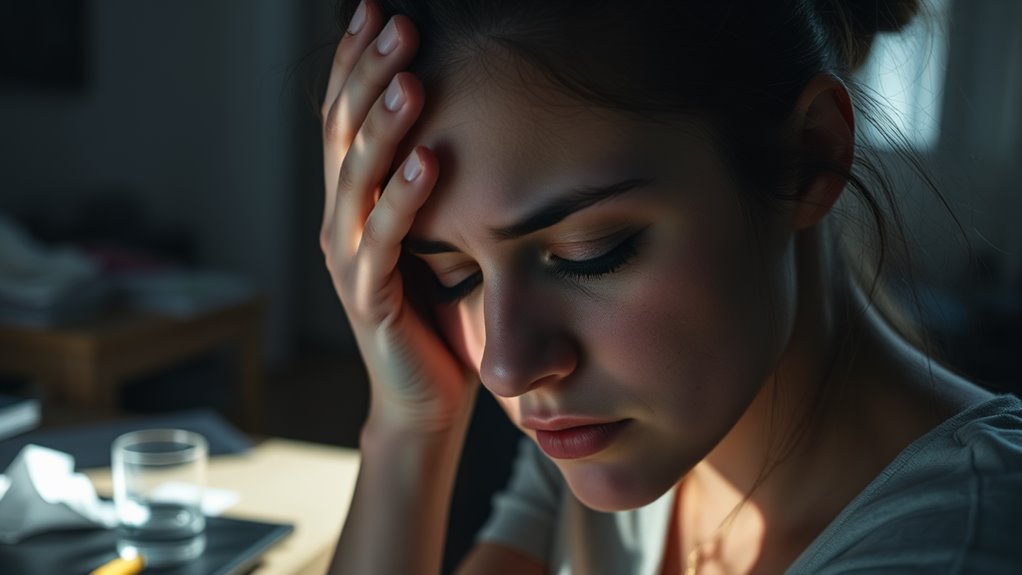Migraine-Free Days Are Here With This Technique!
To enjoy more migraine-free days, start by identifying your triggers like stress, certain foods, and lack of sleep. Use immediate relief techniques such as cold compresses or peppermint tea when a migraine strikes. Making lifestyle changes, like staying hydrated, exercising regularly, and managing stress, can help prevent future episodes. Incorporate mindfulness practices too, as they promote relaxation. Keep going to discover more strategies that can transform your migraine experience for the better.
Understanding the Triggers of Migraines
While you may not realize it, understanding the triggers of migraines is crucial for managing and reducing their frequency. Identifying what sets off your migraines can empower you to take control.
Common triggers include stress, certain foods, dehydration, and lack of sleep. You might find that specific scents or bright lights also play a role in your episodes.
Keeping a migraine diary can help you track patterns and pinpoint these triggers. Once you recognize them, you can make lifestyle changes to minimize exposure.
For instance, if stress is a trigger, incorporating relaxation techniques can be beneficial. By understanding your individual triggers, you’re on the path to fewer migraines and more migraine-free days.
Natural Remedies for Immediate Relief
When a migraine strikes, finding immediate relief is essential to regain your day. You can start by applying a cold compress to your forehead or the back of your neck; the cool sensation often numbs the pain.
Try sipping peppermint tea, as its soothing properties may ease tension. If you’re sensitive to light, retreat to a dark, quiet space to help calm your symptoms.
Essential oils like lavender or eucalyptus can also provide comfort when inhaled or applied topically. Staying hydrated is crucial, so drink plenty of water.
Lastly, gentle stretching or yoga can help relieve muscle tension. Experiment with these remedies to discover what works best for you, and don’t hesitate to reach out to a healthcare professional for more guidance.
Lifestyle Changes for Long-Term Prevention
Making lifestyle changes can significantly reduce the frequency and severity of migraines. Start by maintaining a consistent sleep schedule; aim for seven to eight hours of restful sleep each night.
Hydration is crucial, so drink plenty of water throughout the day. Regular exercise can also help, as it releases endorphins that naturally alleviate pain.
Pay attention to your diet; avoid trigger foods like aged cheeses, chocolate, and caffeine. Keeping a food and migraine diary can help identify specific triggers.
Additionally, managing stress through activities like yoga or gentle stretching can prevent migraines from escalating.
Mindfulness and Relaxation Techniques
Incorporating mindfulness and relaxation techniques into your routine can enhance the benefits of the lifestyle changes you’ve already made. Practicing mindfulness helps you stay present, reducing anxiety that can trigger migraines.
Start with deep breathing exercises—inhale slowly through your nose, hold, and exhale through your mouth. This simple practice can ground you instantly.
Consider adding meditation to your daily routine. Even just a few minutes can create a sense of calm and clarity.
Progressive muscle relaxation is another effective technique; it involves tensing and relaxing different muscle groups to relieve tension.
Lastly, don’t underestimate the power of gentle yoga or tai chi. These activities promote relaxation and can improve your overall well-being, making you less susceptible to stress-induced migraines.
When to Seek Professional Help
How can you tell if it’s time to seek professional help for your migraines? If your headaches are frequent, lasting longer than 72 hours, or worsening despite your self-care efforts, it’s crucial to consult a healthcare professional.
You should also reach out if you experience new symptoms, such as vision changes, confusion, or weakness, as these could signal a more serious condition.
If over-the-counter medications aren’t providing relief, or if you find yourself relying on them too often, that’s another sign to seek help.
A healthcare provider can evaluate your situation, recommend appropriate treatments, and help you develop a personalized management plan.
Don’t hesitate to take action—your well-being matters!
Frequently Asked Questions
Can Diet Changes Help Reduce Migraine Frequency?
Yes, diet changes can help reduce migraine frequency. You might consider tracking your food intake to identify triggers, incorporating more fruits and vegetables, and staying hydrated. Adjusting your diet could lead to fewer migraines overall.
Are There Specific Exercises to Avoid During a Migraine?
During a migraine, you should avoid high-impact exercises, intense strength training, and any movements that worsen your pain. Gentle stretching or yoga can be more beneficial, helping you relax without aggravating your symptoms.
How Do Weather Changes Affect Migraines?
Weather changes can trigger your migraines by altering barometric pressure, temperature, or humidity. You might notice headaches worsening during storms or sudden temperature shifts, so pay attention to these patterns and adjust your activities accordingly.
Is There a Genetic Link to Migraines?
Yes, there’s a genetic link to migraines. If you’ve got a family history of migraines, it increases your chances of experiencing them. Research shows specific genes can contribute to your susceptibility to these debilitating headaches.
Can Children Experience Migraines Like Adults?
Yes, children can experience migraines just like adults. You might notice them complaining about headaches, sensitivity to light, or nausea. Recognizing these symptoms early can help manage their discomfort and improve their quality of life.





